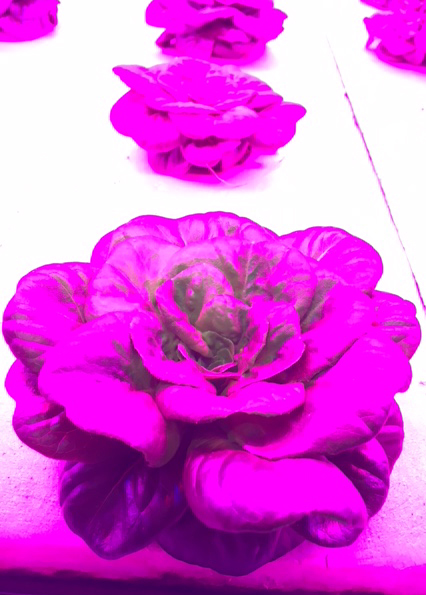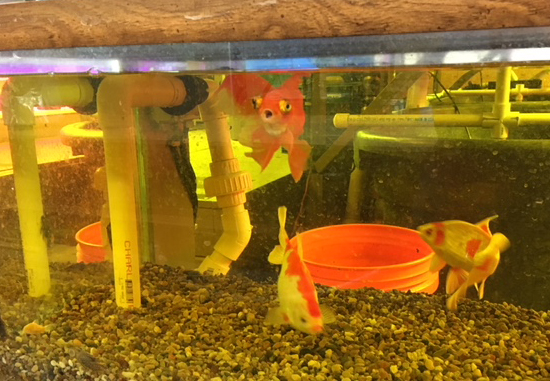One of the biggest trends in indoor gardening nowadays is hydroponics—growing plants indoors, usually under lights, with their roots in water that is enriched with fertilizer. This technique (fine-tuned in the last decades of the 20th century for the discreet production of marijuana) is now developing into a small but significant sector of agriculture. If you buy bell peppers from the Netherlands in the middle of winter, you’re buying vegetables grown hydroponically.
Hydroponics allows food to be grown all year round in places that don’t have a year-round growing season or wide-open spaces, such as my own city of Chicago. A number of urban farming startups and nonprofits around the city use this technique as part of the city’s growing urban agriculture scene. They often supply restaurants eager for herbs and greens from local sources, even in winter.
There’s one more ingredient to this dish: fish. Often, Chicago hydroponics is actually something called “aquaponics,” in which the fertilizer comes from fish tanks. Well-fed fish—usually tilapia—excrete natural fertilizer into the water where they swim. This enriched water is pumped past the plants’ roots, which absorb nutrients from it. Eventually, the tilapia themselves go to market, like the lettuce and basil.
I recently visited a small aquaculture installation at the Arturo Velasquez Institute, a community college in Chicago. Windy City Harvest, a program of the Chicago Botanic Garden, raises fish and fresh produce there as part of its urban agriculture job training program. Some of the farmers are apprentices preparing to create their own urban farming startups. Others are recently incarcerated and getting job training as they work.
It’s amazing to how much food production can be packed into a pretty tight space there (although a big new home, with room for 50,000 gallons of fish tanks, is under construction). A couple of chest-high blue plastic tanks are full of busily swimming fish. White plastic pipes carry water from the tanks to shallow trays of plants. Chard, lettuce, herbs and strawberries grow under lights, some bathed in a red tinge that helps keep plants compact.
Nearby is a tank of goldfish—pets that never end up on a plate. It’s a reminder that if you have both a conservatory and a fish tank, you have a source of home-brewed fertilizer on hand. It might not supply all the nutrients your plants need, but it will certainly provide a snack.
Fertilizer from fish is hardly a new idea in gardening. I’ve often used fish emulsion for container plants, and we all learned in grade school how Native American supposedly taught the Pilgrims to fertilize a corn plant by burying a dead fish when they planted the seed. For me, the appeal of aquaponics is the ingenuity of having fertilizer from your fish and eating it too.

Lettuce, fertilized by water from a fish tank, grows under lights in a Windy City Harvest urban agriculture program in Chicago. Red light, mixed with a small amount of blue light, helps keep plants compact.

When you change the water in a fish tank, don’t waste it. That water could supply at least some nutrients to the plants in your conservatory.


